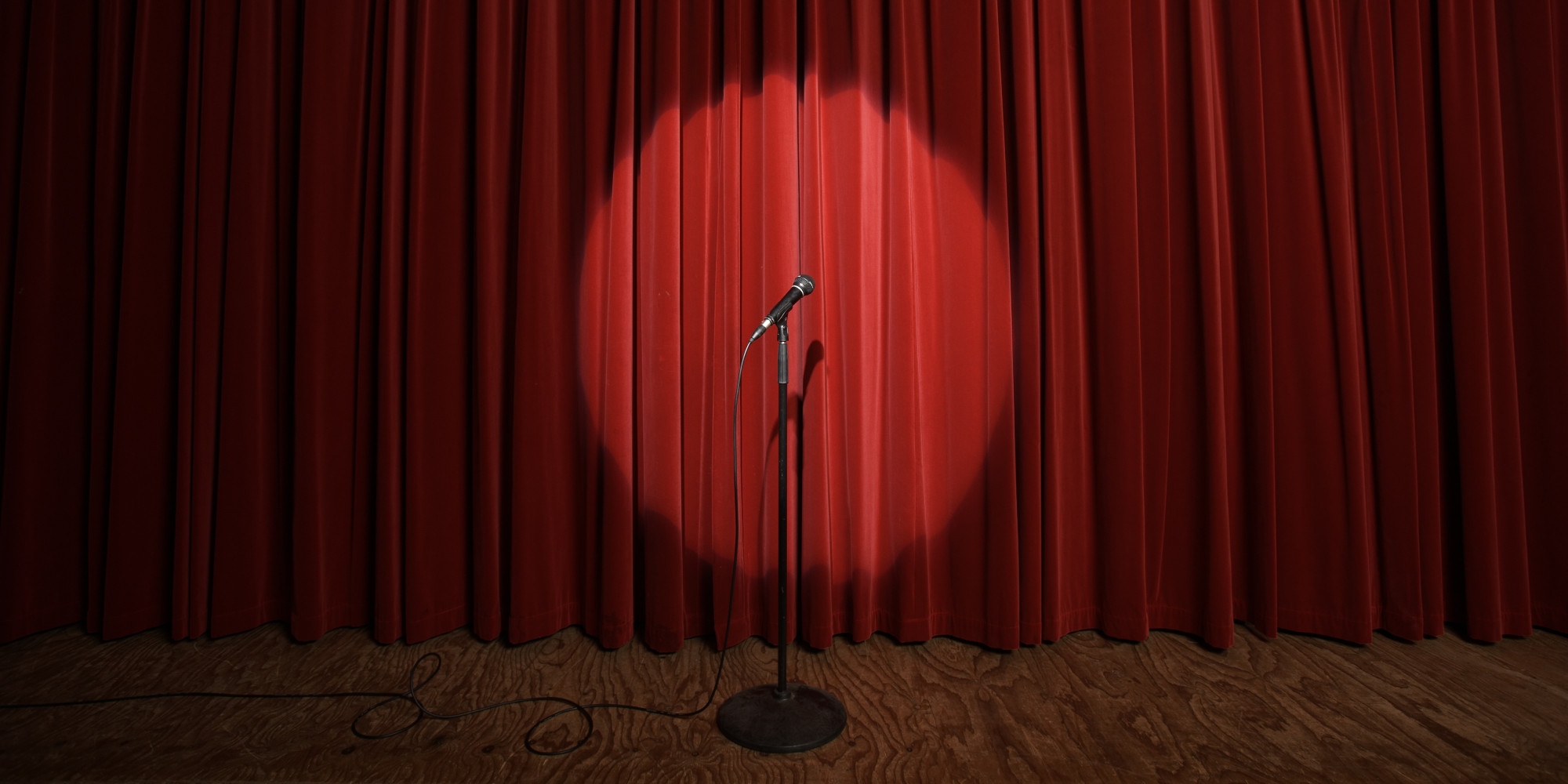Six lessons corporate presenters can learn from stand-up comedians
 What’s the difference between a comedian and an effective corporate presenter?**
What’s the difference between a comedian and an effective corporate presenter?**
It’s not another essay on the difference between using humour and telling jokes. Or a lecture on how we need to be sensitive with our amusing subject matter to avoid causing offence.
There are plenty of ideas we can take from the world of stand-up comedy to help improve the quality of our corporate presentations.
1) Let’s get the obvious one out of the way. Rehearse. Very few comedians “wing it” throughout their set. Some might appear to be making it up, particularly when interacting with the audience, but this is often a case of drawing upon years of performing. Most of their material is carefully scripted and perfected.
Prior to playing to more than a million people during his 2010/2011 “Tour That Doesn’t Tour Tour … Now On Tour”, Peter Kay prepared by playing several nights to audiences of just 220 in Bury’s tiny arts venue, the Met.
Jerry Seinfeld’s return to stand-up after years away from the circuit is captured wonderfully in the film “Comedian.” He started with completely new material doing five-minute slots in different clubs. The film highlights his self-doubt and anxiety as he attempts to hone his material in front of live audiences. If you get nervous before delivering new material, be reassured that the multi-award winning, multi-millionaire Jerry Seinfeld does too.
2) Start with something that’ll make your audience sit up and listen. In a comedy club (rather than when fans have bought tickets to see their particular favourite) comedians don’t have long to reassure their audience that they’ll be providing plenty of funny entertainment. Sometimes they’ll start with an outrageous idea or create some tension in the room. Whatever you start with, make sure your audience wants to hear more.
3) Tell your stories because they provide context, making your material more digestible and memorable. Comedians often use stories from their personal experiences. It’s true that they then exaggerate them for comic effect. But as an audience we’re immediately hooked when a comedian starts to describe a recent experience that led to huge embarrassment or generated a hilarious misunderstanding.
4) Make it easy for your audience to join in so it feels more like a two-way conversation. Stand-up comedians will often try to build rapport with the entire audience by demanding things like, “Give me a cheer if you’re from London.” That comes partly from the fact the audience are sitting in darkness so the comedian can’t see if anyone’s put their hand up. It’s also easier to get a wary audience to participate if they can just “voice” their response, rather than be compelled to demonstrate it. Paul Smith is a master at what’s called “crowd work” where he regularly engages with the front row.
5) Edit, edit, edit. Twitter (X) users have become more disciplined with their messages. It’s amazing how a long-winded thought can be carefully crafted to sit within 140 characters and yet the essence of the message is still there. Comedians often hone their script to deliver just enough content for the joke to make sense. Why include all the extraneous information in a corporate presentation if it detracts from your message and reduces your audience’s understanding? Jimmy Carr prides himself on being able to create jokes with as few words as possible such as: “Stationery store moves.” Not the funniest joke you’ll read today, but it shows how succinct you can be.
6) End on a high to ensure your audience leaves the room reflecting on your big message. Comedians often leave one of their “bankers” to the end of the set. Whether it’s a guaranteed laugh or the climax to a rambling and amusing anecdote, comedians want to leave the stage with the sound of applause in their ears. What’s your big finale that’ll generate a similar response in your corporate audience?
Why highlight these lessons? Because the corporate audience is made up of exactly the same people who enjoy watching a good quality comedian. The best comedians are masters of face-to-face communication. What other presentation techniques does your favourite comedian prefer that you could be using in your next presentation?
** Feel free to offer your own punchline.
